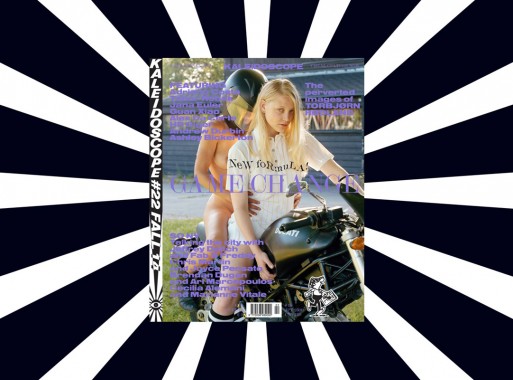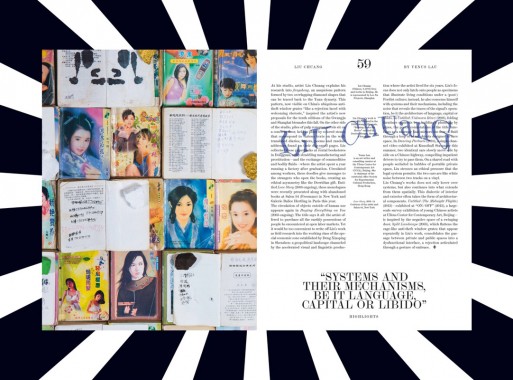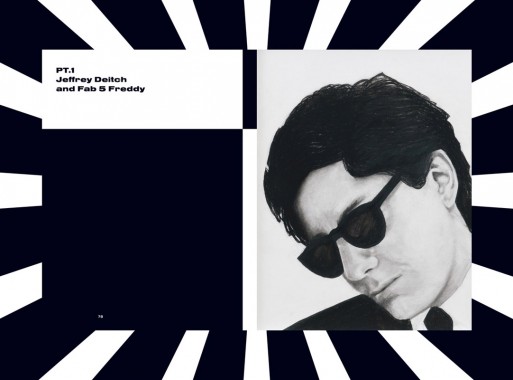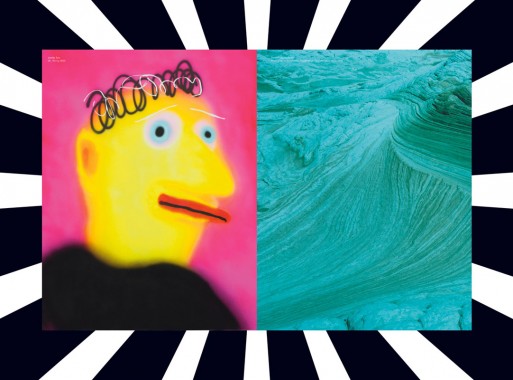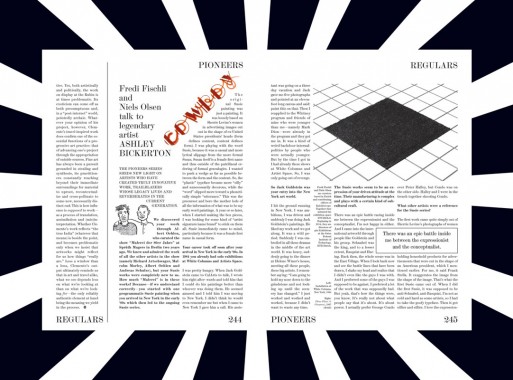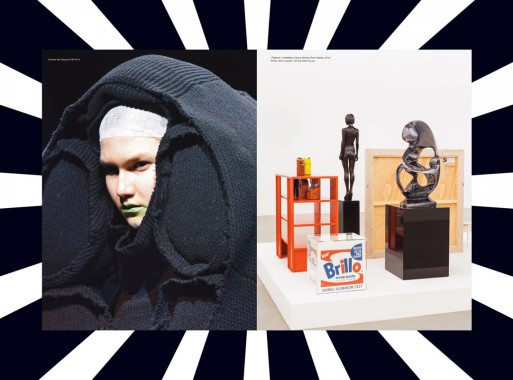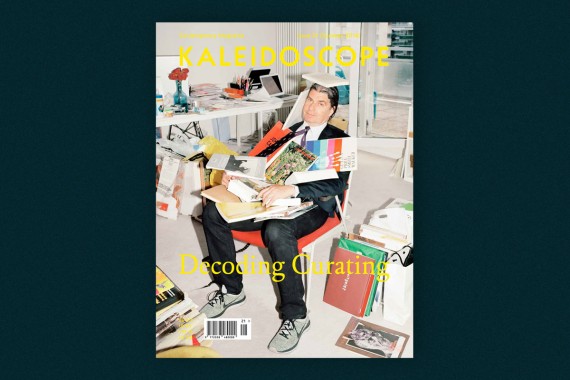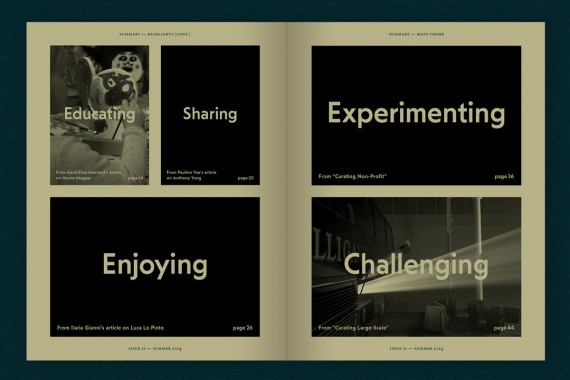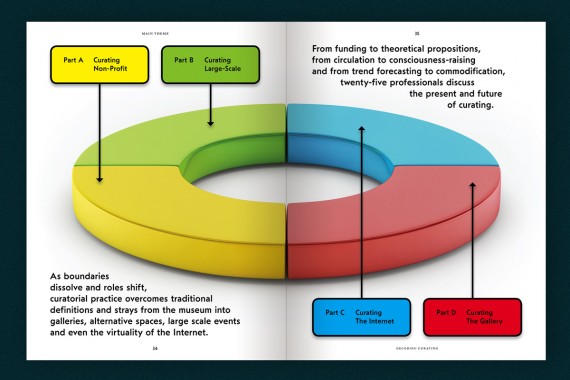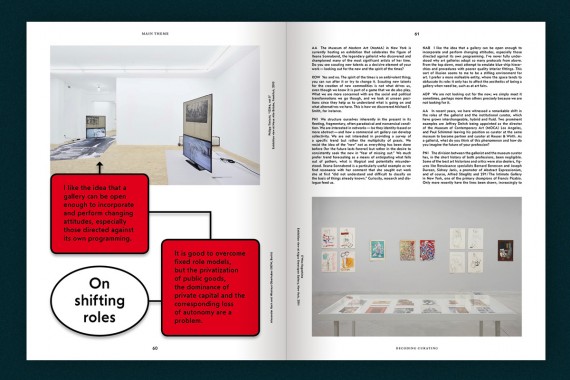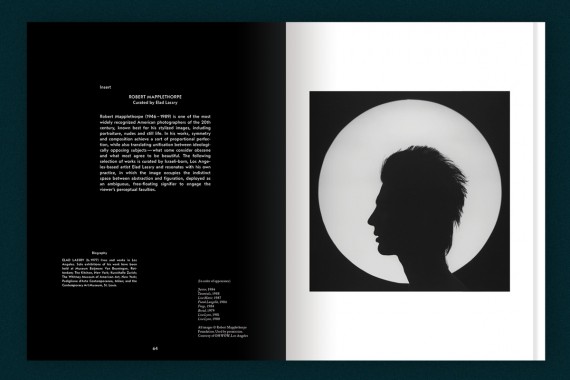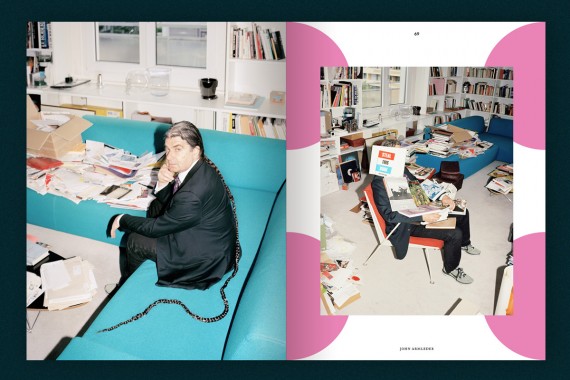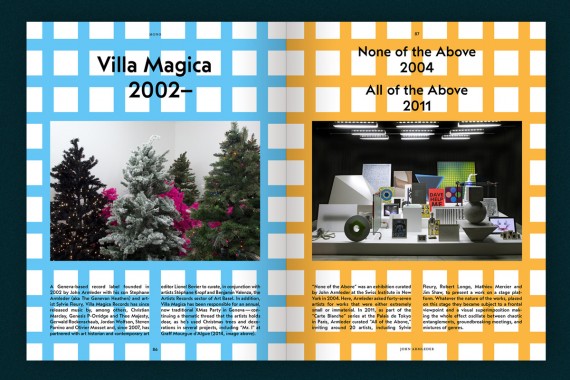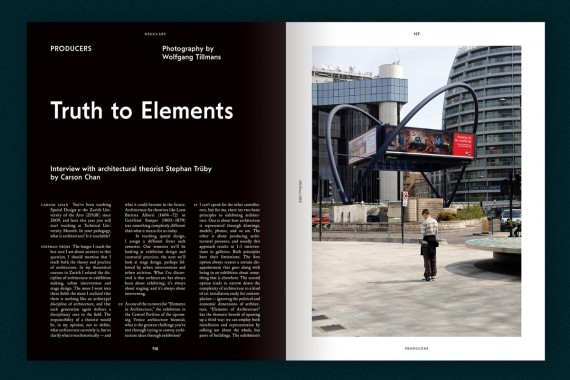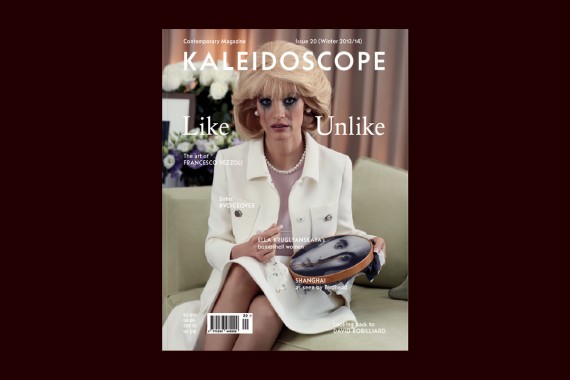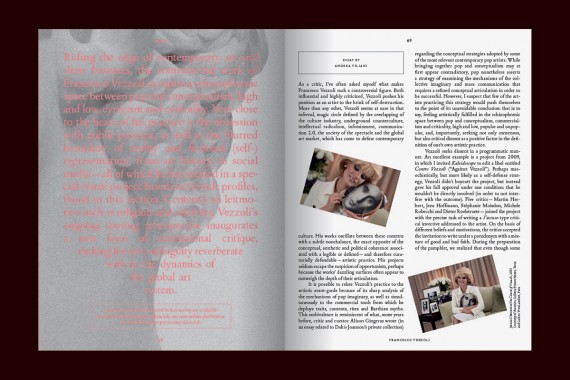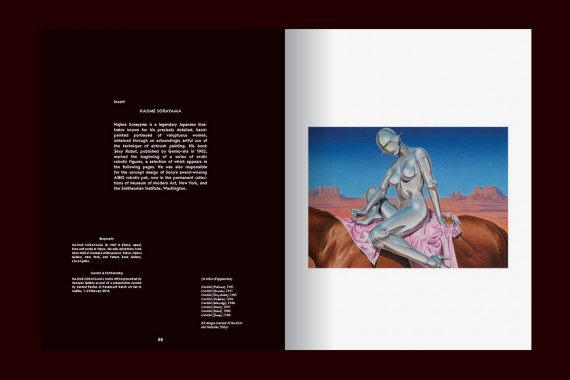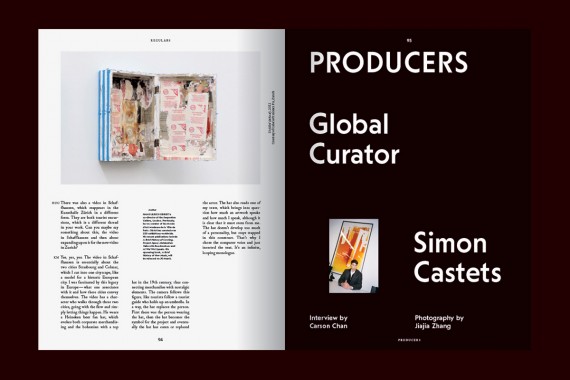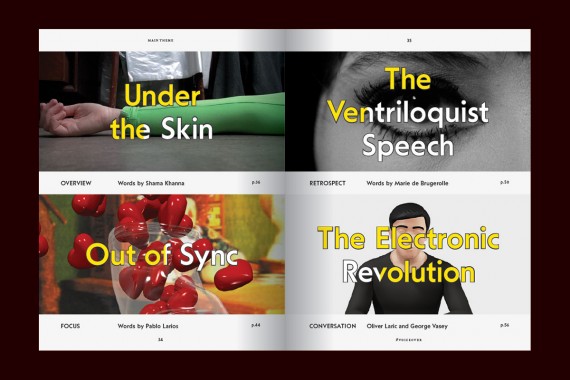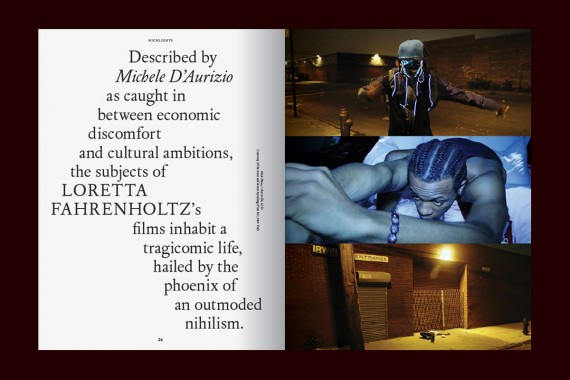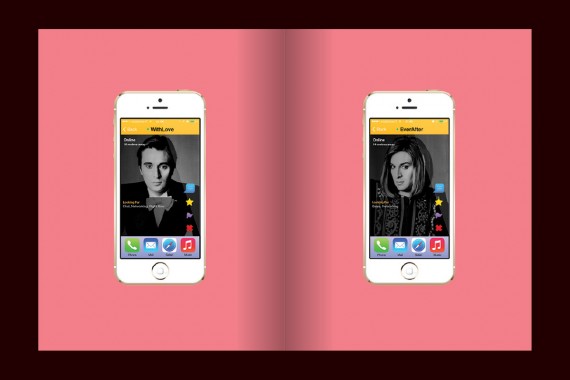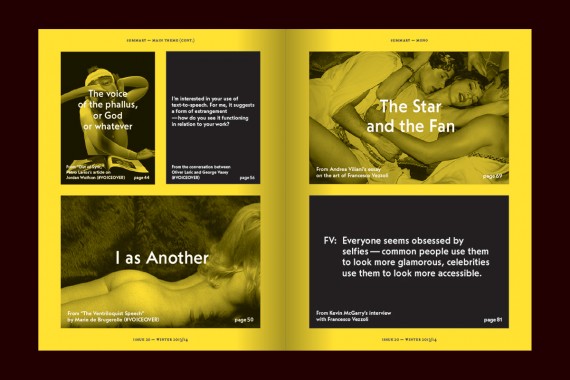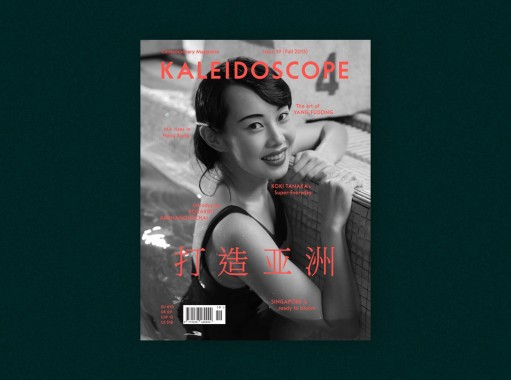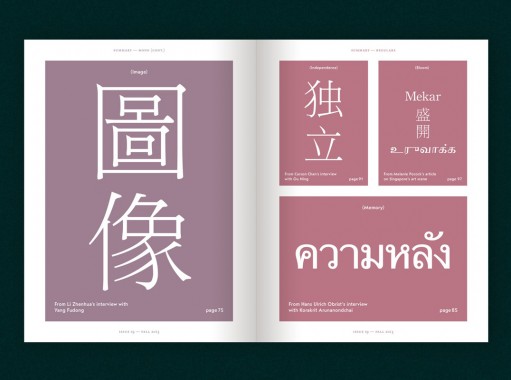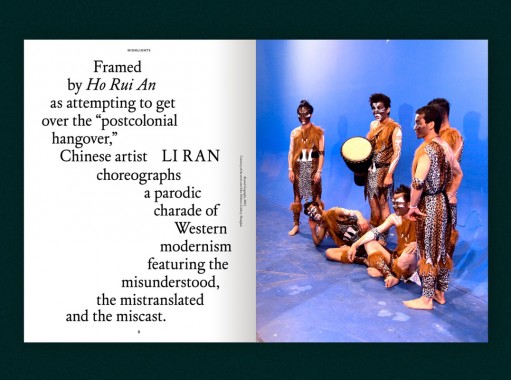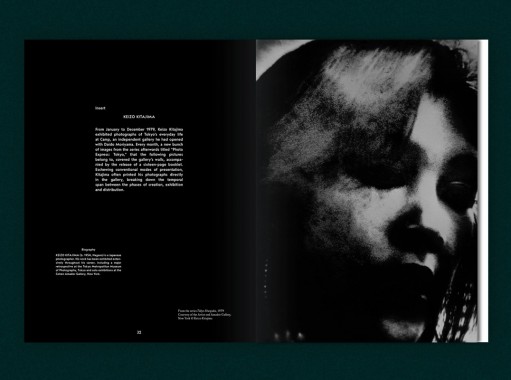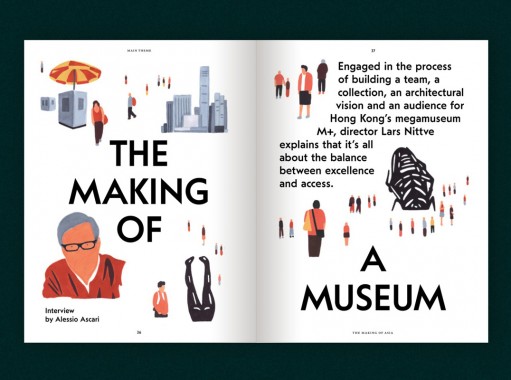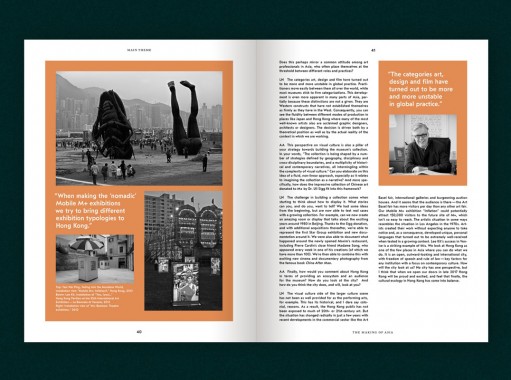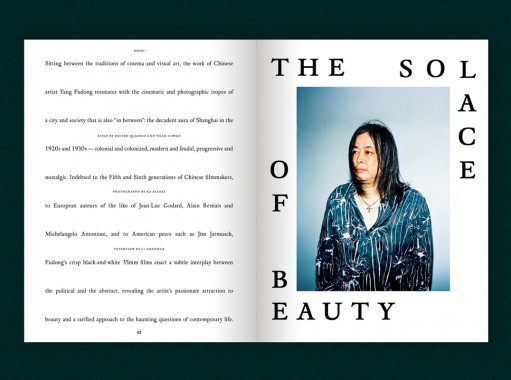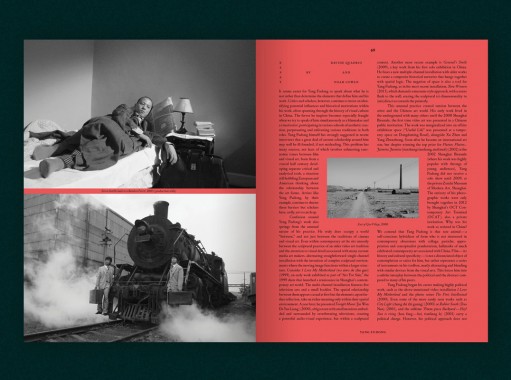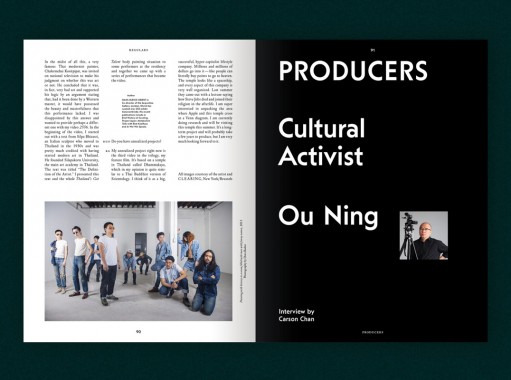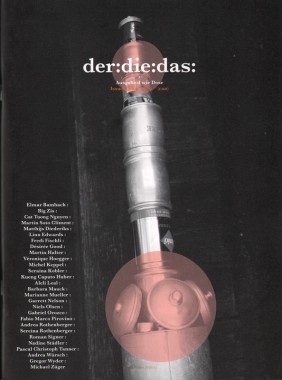KALEIDOSCOPE Magazine 22
KALEIDOSCOPE Magazine 22, Fall 2014
Softcover, 256 pp. + Ari Marcopoulos poster, offset 4/4, 230 x 300 mm
English edition
ISSN 2038-4807
Published by KALEIDOSCOPE Press
$18.00 ·
In the renovated opening section of HIGHLIGHTS, twelve profiles account for the best of the season: Boychild (by Francesca Gavin), Ed Fornieles (by George Vasey), Adriano Costa (by Laura McLean-Ferris), Liu Chuang (by Venus Lau), Carol Rama (by Jesi Khadivi), Tabor Robak (by Alex Gartenfeld), Jana Euler (by Martha Kirszenbaum), Guan Xiao (by Pablo Larios), Alex Da Corte (by Piper Marshall), David Ostrowski (by Peter J. Amdam), Aphex Twin (by Francesco Tenaglia), and Torey Thornton (by Ross Simonini).
To follow, our signature MAIN THEME section, titled SO NY, is dedicated to practices informed and inspired by the city of New York. From the gritty urban feeling to the great sense of community — living and working in NYC provides endless inspiration and fuel for artists and creators. We have selected four pairs, from different generations and circles, to share memories and discuss perspectives: Jeffrey Deitch and Fab 5 Freddy, Chris Martin and Joyce Pensato, Brendan Dugan and Ari Marcopoulos, and Cecilia Alemani and Marianne Vitale. The result is a choral tale of convergences, strategies, connections, and old and new magics. Enriched with a collectable poster by Ari Marcopoulos!
On the other hand, the MONO section and cover story are dedicated to Norwegian, Los Angeles-based photographer Torbjørn Rødland. Seemingly speaking the fetishistic idiom of advertisement, marketing and food photography, Rødland’s images are in fact pervaded by the most compelling kind of perversity and haunted by boredom, spiritual longing, and a sense of aftermath. This monographic survey comprises an essay by Chris Sharp, an interview by Hanne Mugaas, and original portraits by Trine Hisdal.
Later on, a brand new section invites the eye to an enthralling journey across over 80 pages of visual contributions by artists, curators and image-makers, affirming the magazine’s centrality as a tool to show and experience art. This issue’s VISIONS include “Chopped & Screwed: Austin Lee and David Benjamin Sherry,” curated by Alessio Ascari; H.R. Giger’s “Biomechanoid”; Dorothea Tanning’s “Paintings”; Alexandra Bachzetsis’s “From A to B via C”; “Rondes Bosses,” curated by Nicolas Trembley; Chris Wiley’s “Technical Compositions”; and David Rappeneau’s “$$$$$$$$$$$$$$$$$$$$$$$$$$$.”
Lastly, the closing section of REGULARS features our insightful columns on the past, present and future of art and culture: in the first installment of Futura 89+ Hans Ulrich Obrist and Simon Castets interview American poet Andrew Durbin; Producers features Carson Chan’s conversation with Artsy’s founder Carter Cleveland; Christopher Schreck explores Francesco Clemente’s India as part of the Panorama series; and in Pioneers Fredi Fischli and Niels Olsen talk to legendary artist Ashley Bickerton.
KALEIDOSCOPE Magazine 21
KALEIDOSCOPE Magazine 21, Decoding Curating
Softcover, 234 pp. + three special inserts, offset 4/4, 220 x 287 mm
English edition
ISSN 2038-4807
Published by KALEIDOSCOPE Press
$18.00 ·
In the opening section of HIGHLIGHTS, we have selected five emerging, ’80s-born practitioners from different backgrounds and continents — Alex Gartenfeld, Sarah Rifky, Hanne Mugaas, Anthony Yung and Luca Lo Pinto — representing a glimpse into the multiplicity of visions and motivations behind, as well as approaches to, the curatorial practice.
To follow, the MAIN THEME section comprises four extensive discussions, involving as many as twenty-five international professionals — including Adam Szymczyk, Sarah McCrory, Lauren Cornell, Dena Yago and Mitchell Algus — to comment on how curating unfolds in such diverse frameworks as the not-for-profit organization, the large-scale exhibition, the Internet, and the commercial gallery.
Surprisingly, on the other hand, the MONO section and cover story are dedicated to an artist, Swiss living legend John Armleder — with a comprehensive interview by Andrea Bellini, an essay by Jeanne Graff and a portrait by Mathilde Agius — as a means to account for an organic and unconstrained approach to all sides of creative production and to hint at the long and enthralling tradition, of Duchampian descent, of artist/curators.
Lastly, the closing section of REGULARS features interviews exploring to what extent curatorial practice has strayed into other fields, such as architecture, cuisine and radio broadcasting: Hans Ulrich Obrist interviews NTS founder Femi Adeyemi; Fredi Fischli and Niels Olsen talk appropriating exhibitions with cult curator Bob Nickas; Jesi Khadivi discusses the art scene in L.A. with man-about-town Michael Ned Holte; Carson Chan meets Venice Architecture Biennale’s key contributor Stephan Trüby; and Francesca Gavin interrogates editor Emma Robertson and promoter Alessandro Porcelli on the art of food.
This issue is enriched by our seasonal TIPS on reading, listening, stopping by, meeting and visiting; as well as three visual INSERTS, specially commissioned as so many experiments of exhibitions on paper: “Portraits of Society” curated by Nicholas Cullinan, ”Robert Mapplethorpe” curated by Elad Lassry, and “Coupling” curated by Piper Marshall.
KALEIDOSCOPE Magazine 19
KALEIDOSCOPE Magazine 19 — Fall 2013
Softcover, 242 pp. + three special inserts, offset 4/4, 220 x 287 mm
English edition
ISSN 2038-4807
Published by KALEIDOSCOPE Press
$18.00 ·
The opening section of HIGHLIGHTS features: LA-based Japanese artist Koki Tanaka, who pursues the Super-Everyday to find beauty in the ordinary, as explained by Miwako Tezuka; Chinese artist Li Ran, framed by Ho Rui An as attempting to get over the “postcolonial hangover”; Basir Mahmood, who directs his pragmatist gaze upon what Gemma Sharpe describes as the sociological imperatives of Pakistan’s urban life; Korean New Zealand artist Seung Yul Oh, whose practice is read by Emma Bugden as blurring the lines of art and play; and Filipino artist Maria Taniguchi, whose patterns and repetitions are, according to Joselina Cruz, elements of her latent archeology.
Evocatively titled The Making of Asia, the MAIN THEME section discusses the creation and diffusion of local narratives in the Asia Pacific region: editor-in-chief Alessio Ascari interviews Lars Nittve, the director of Hong Kong’s megamuseum M+; art duo Desire Machine Collective talk to Shai Heredia, the founder of India’s most cutting-edge film festival; Gavin Wade speaks to Cao Fei about his new film and the problem of urbanization in metropolitan China; and a panel discussion brings together art initiatives from in and beyond the region — Arthub Asia, Guggenheim UBS Map, Asia Art Archive, and Tate Research Centre: Asia Pacific — around the idea of network.
Sitting between the traditions of cinema and visual art, the work of Chinese artist Yang Fudong — the protagonist of this issue’s MONO — resonates with the cinematic and photographic tropes of a city and society that is also “in between”: the decadent aura of Shanghai in the 1920s and 1930s. As discussed in an essay by Davide Quadrio and Noah Cowan and an interview by Li Zhenhua, Fudong’s crisp black-and-white 35mm films enact a subtle interplay between the political and the abstract, revealing the artist’s passionate attraction to beauty and a rarified approach to the haunting questions of contemporary life.
Lastly, this issue’s section of REGULARS features Hans Ulrich Obrist introducing Thai artist Korakrit Arunanondchai; Gary Carrion-Murayari staging a three-way interview with art collectives The Propeller Group (Vietnam) and CAMP (India); Carson Chan meeting cultural activist Ou Ning; Melanie Pocock reporting on the art scene in Singapore; and Fredi Fischli and Niels Olsen rediscovering the art of cult psychedelic artist Keiichi Tanaami.
The issue is enriched by our seasonal TIPS on following, reading, listening, stopping by, meeting and visiting; as well as by three SPECIAL INSERTS, including a selection of paintings by Chinese artist Wang Xingwei; pictures by Japanese photographer Keizo Kitajima; and a series of digital collages by Filipino artist Pio Abad.
